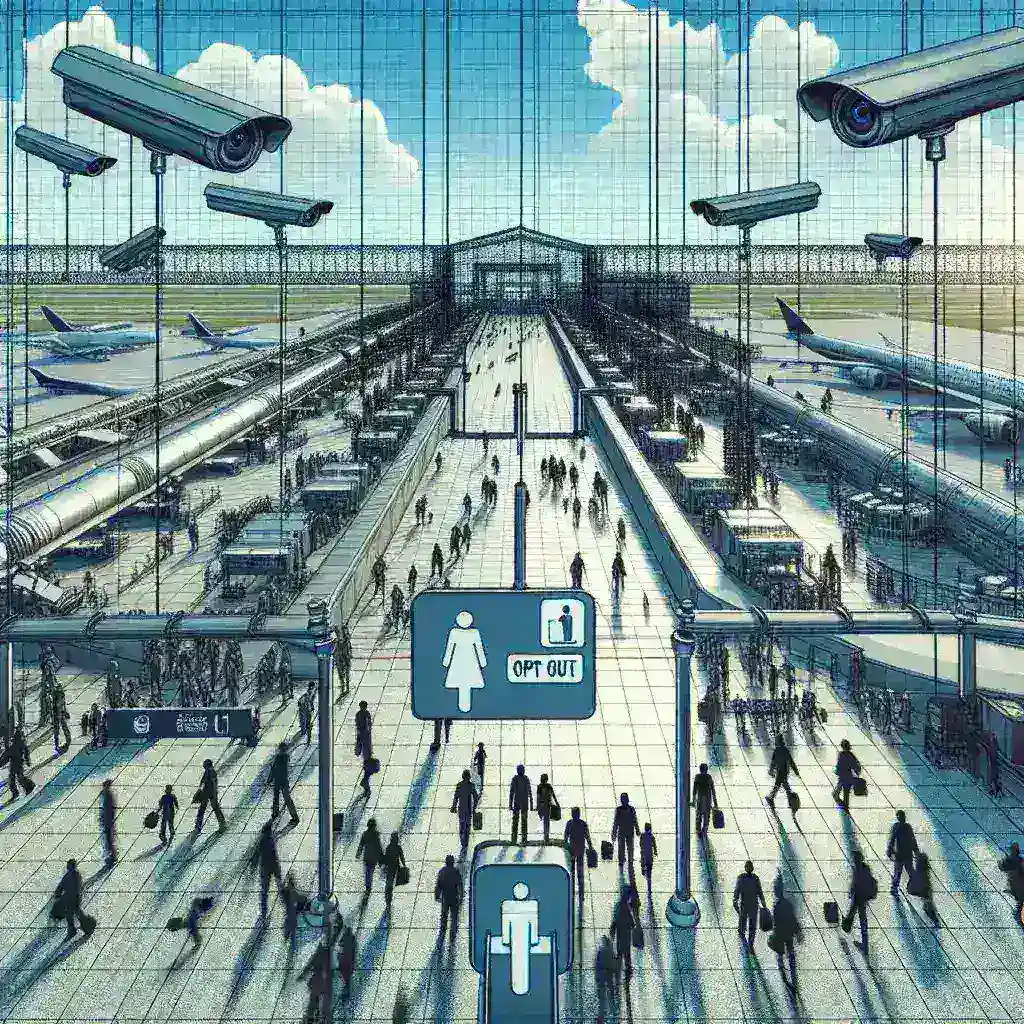Introduction
In recent years, the evolution of technology has significantly impacted the travel experience. One of the most notable advancements is the implementation of facial verification systems in airports across the United States. As these trials expand, the introduction of opt-out signage requirements has become a pivotal aspect of discussions surrounding privacy, efficiency, and traveler comfort.
The Rise of Facial Verification Technology
Facial recognition technology is not a new concept; it has been around for decades and has seen various adaptations across multiple industries. Airports, however, have been at the forefront of this technology’s application, utilizing it to streamline passenger processing, enhance security protocols, and ultimately improve the overall travel experience.
Historical Context
Facial recognition in airports began to gain traction in the early 2000s, primarily as a security measure. Over the years, the technology has advanced, becoming more accurate and efficient. In 2020, the COVID-19 pandemic accelerated the adoption of contactless technologies in travel, prompting several airports to incorporate facial recognition systems to minimize physical contact.
Current Landscape
As of now, several major US airports, including those in Los Angeles, Atlanta, and Chicago, are conducting trials that involve facial verification processes. These trials aim to determine the effectiveness of the technology in enhancing passenger flow and security. However, the use of biometric data has raised concerns regarding privacy and data protection.
Opt-Out Signage Requirements
As facial verification technology rolls out, the introduction of opt-out signage requirements is a crucial step toward addressing privacy concerns. These requirements ensure that travelers are informed about their rights regarding facial recognition systems and provide them with the option to opt-out.
What Are Opt-Out Signage Requirements?
Opt-out signage requirements mandate that airports display clear and visible information regarding the use of facial recognition technology. The signage must inform passengers that they can choose to opt-out of having their facial data processed. This requirement aims to enhance transparency and allow travelers to make informed decisions about their personal data.
Benefits of Opt-Out Signage
- Enhanced Transparency: Providing clear signage helps travelers understand their rights, fostering trust in the system.
- Informed Consent: Opt-out options ensure that individuals can choose whether or not to participate in facial recognition processes.
- Greater Public Engagement: By encouraging feedback from travelers, airports can assess public sentiment and address concerns related to privacy.
The Pros and Cons of Facial Verification in Airports
As with any technology, the implementation of facial verification systems comes with both advantages and disadvantages.
Pros
- Increased Efficiency: Facial recognition can expedite the check-in and boarding processes, reducing wait times for passengers.
- Enhanced Security: By accurately identifying individuals, airports can bolster security measures and minimize risks.
- Contactless Experience: In a post-pandemic world, reducing physical interactions is crucial for traveler safety.
Cons
- Privacy Concerns: The collection and storage of biometric data raise significant privacy issues.
- Potential for Misuse: There is a risk that facial recognition technology could be misused for surveillance purposes.
- Technological Limitations: Inaccuracies and biases in facial recognition algorithms can lead to false identifications.
A Look Ahead: Future Implications
The trajectory of facial verification technology in US airports is poised for growth. As more airports adopt these systems, the conversation surrounding privacy, data security, and traveler experience will become increasingly important.
Predictions for the Future
- Regulatory Frameworks: It is likely that regulatory bodies will establish guidelines governing the use of biometric data at airports.
- Technological Advancements: As technology continues to evolve, we can expect enhanced accuracy and security measures within facial recognition systems.
- Expansion of Opt-Out Options: The future may see more comprehensive opt-out options, catering to diverse traveler preferences.
Real Examples of Implementation
Several airports have successfully integrated facial recognition technology, serving as case studies for future implementations. For instance, Hartsfield-Jackson Atlanta International Airport has reported reduced wait times for travelers utilizing facial recognition systems, demonstrating the potential benefits of the technology.
Conclusion
The expansion of facial verification trials in US airports, coupled with opt-out signage requirements, marks a significant development in the intersection of technology and travel. While the benefits of enhanced efficiency and security are clear, addressing privacy concerns through transparent practices is essential for fostering public trust. As airports continue to evolve, the focus should remain on balancing innovation with the protection of individual rights.
Expert Opinions
Experts in the field of technology and privacy emphasize the importance of responsible implementation of facial recognition systems. According to Dr. Jane Doe, a leading privacy advocate, “Incorporating opt-out options into facial verification trials not only respects individual choices but also sets a precedent for future technological advancements.”
Final Thoughts
As we navigate the complexities of modern travel, it is vital that stakeholders prioritize both innovation and the rights of travelers. The expansion of facial verification trials in US airports presents an opportunity to redefine the travel experience, and with careful consideration of privacy and transparency, we can create a system that serves the interests of all parties involved.






Leave a Reply